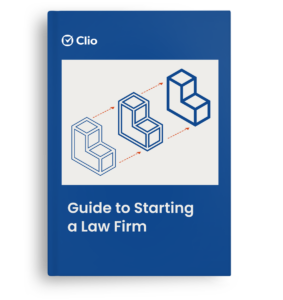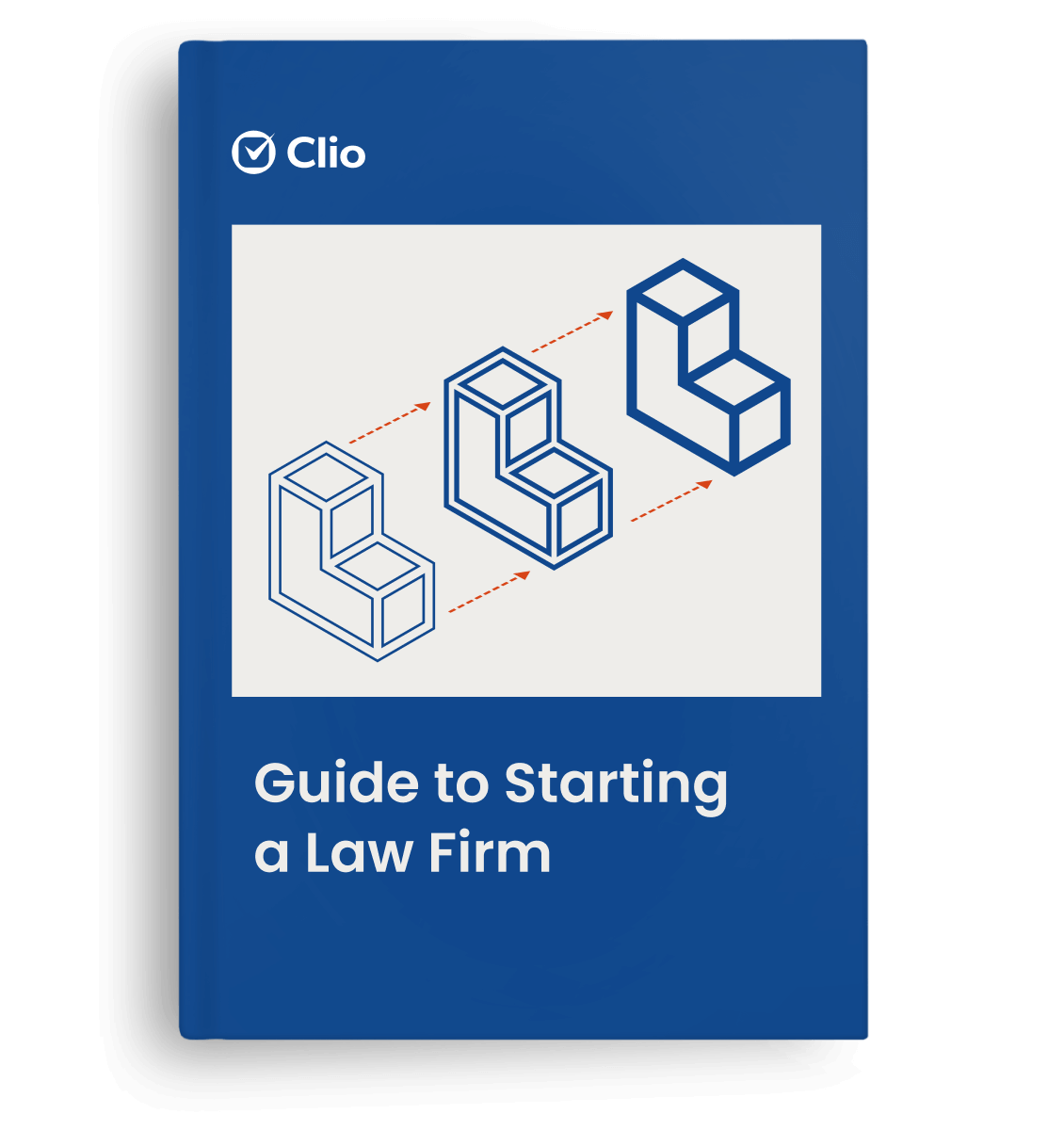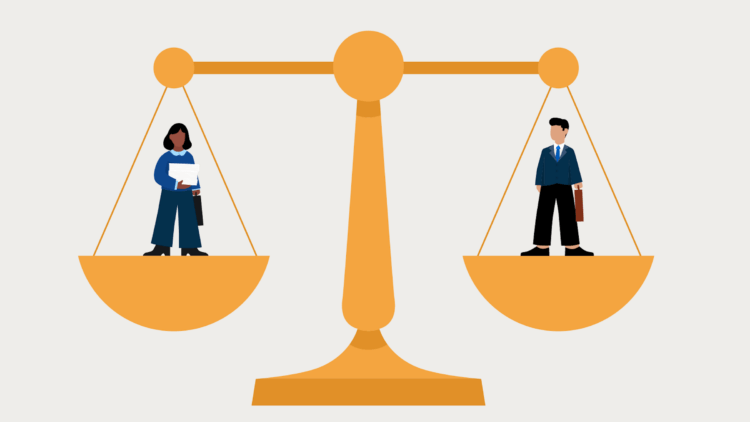The way your clients experience your law firm—from intake, to invoice, to hopefully referral—plays a big part in whether they’ll continue to do business with you. As Jack Newton covers in his bestselling book, The Client-Centered Law Firm, improving the client journey can make a big difference for your law firm, but how do you know where to start?
Josh Kubicki, co-founder of Bold Duck Studio, previously spoke at the Clio Cloud Conference about how law firms can revamp their client journey for happier clients and a more profitable business.
What is the Client Journey?
Simply put, the concept of the client journey refers to all the touchpoints a client has in their journey with you, from when they realize they have a legal problem, to when the final bill is paid and they’re considering referring you. “The whole goal of the client journey is to really think about how the client experiences your services,” Josh explained. “Then, figure out a way to strengthen and make it more positive.”
Follow these steps to assess and revamp the client journey at your law firm.
1. Recognize how much client experience matters.
“We are, as consumers, being conditioned to value an experience over the underlying product or service,” said Josh. “We’re moving from a service-based economy to an experience-based economy.”
This shift means consumers expect effortless experiences from all businesses, including your law firm.
And, in the digital age, they’re more likely to share their experience with others.
As consumers, we’re prompted to offer feedback after purchasing just about anything, from a $5 Starbucks frap to that $1500 West Elm couch. 93% of consumers are influenced by online reviews when making a purchase, so your online reputation certainly matters.
In other words, you have a lot to gain by improving client experiences and the client journey at your firm.
2. Don’t mistake your clients for one-size-fits-all customers.
“The client is just not some demographic,” warned Josh. While it’s easy to think of your average client in terms of job title, years of experience, and common business challenges, the reality is more complicated than that. Your clients are human, and creating a positive client journey means creating an experience that is flexible rather than one-size-fits-all.
Learn to segment your clients into relevant groups, so you can begin to think more deeply about what they experience when they interact with your firm. Segment based on who they are, the problems they have, and what they’re trying to achieve, Josh suggested.
Relevant information could be collected from client intake surveys, end-of-case feedback interviews, and/or by noting your observations when talking to clients.
3. Put yourself in your client’s shoes.
Here’s the hard part: Go beyond segmenting, and try to truly put yourself in your client’s place. Here are a few questions to ask to get you started:
- How did they find your firm?
- Why did they contact you?
- What are they hoping you can do for them?
- What industry are they in?
- Who’s making the buying decisions in their family or at their company?
The questions you ask will depend on your clients and practice area. It’s important to think clearly about your client’s point of view when it comes to how you deliver legal services. This will enable you to develop deep empathy for their situation so that you’ll invest in the right places to provide an effortless experience.
4. Map out your client journey.
Client journey mapping is an exercise that helps you better understand your clients’ experiences and look for opportunities for improvement. To build out your firm’s client journey map, start by mapping out all the touchpoints where your client interacts with your firm, from when they first reach your website, to client intake, to project or contract completion. Don’t just think about how you work with the clients, but also other people at your firm, like paralegals.
All calls, emails, marketing newsletters, and meetings should be included in this journey. When you line everything up, you may be surprised at what the journey looks like!
As a bonus step, rate these interactions as well. This could be as simple as a scale of one to five, or a frowning or smiley face, but adding ratings is a useful way to look at how your clients are experiencing your law firm now.
5. Create a job description for your legal service.
Here’s a quick hack from Josh: Zero in on what your clients really need from the client journey with a mock job description.
Think about the real-world example of a fast-food company that wanted to sell more milkshakes. (We promise, this is relevant!)
They hired a business consultant to help them figure out how to do this, and the first thing the consultant noticed was sales of milkshakes tended to spike in the morning. The consultant did some research and quickly realized busy commuters were coming to the restaurant to buy the milkshakes because they were fast, but also because they were incredibly easy to drink in the car, unlike a breakfast sandwich.
This data helped the restaurant redesign the customer journey to match how people were using the product, not how they thought people were using it.
A job description, or a job to be done, can help you figure out similar findings for your law firm. You’ll want to answer these questions:
- What is your product or service?
- Who is purchasing it? (Take one of your client segments to answer this, rather than all of your clients.)
- What do they really want? What job are they hiring your product or service to do?
- What else can we do to give them what they want?
6. Redesign your company to fit your actual clients.
Here’s another real-world example from Josh, whose company was hired by a law firm after it lost an insurance company client. This client represented about 40% of their business.
Josh dug into the firm’s data and discovered that insurance companies represented more than half of their revenue, so the loss of this type of business would be catastrophic. Although it was structured as a general services law firm, it was actually more of an insurance law firm.
“If the majority of your revenue comes from a certain type of client, why wouldn’t we design your business to optimize that type of client’s experience through your law firm, start to finish?” Josh said.
A business redesign was in order. Workflows, billing, and data capture were all reconfigured to fit insurance companies.
Once the new processes were in place, Josh wrote a new job description, specifying that the firm was an insurance defense solution, rather than a general law firm. It was much more specific. The firm got the client back!
The upshot is, take sure your law firm is focused on the clients you’re truly serving, and you’ll attract clients who are a good fit for the service you provide.
Key Takeaways
Paying attention to your client journey can mean big benefits for your law firm. By focusing on the different touchpoints of your client journey, who your client is, and what they want, you’ll be that much better positioned to deliver an excellent client experience and get more business for your law firm.
We published this blog post in May 2018. Last updated: .
Categorized in: Business









